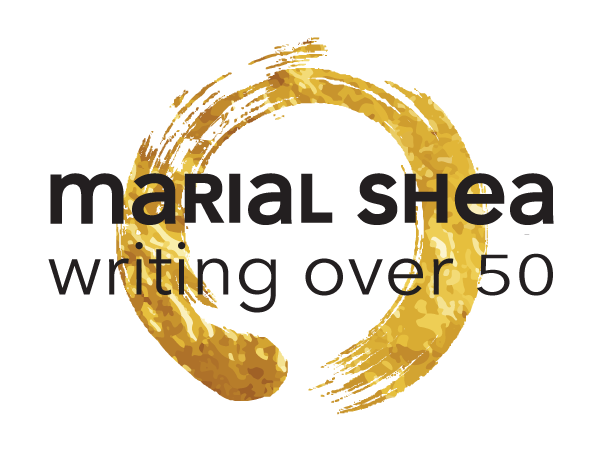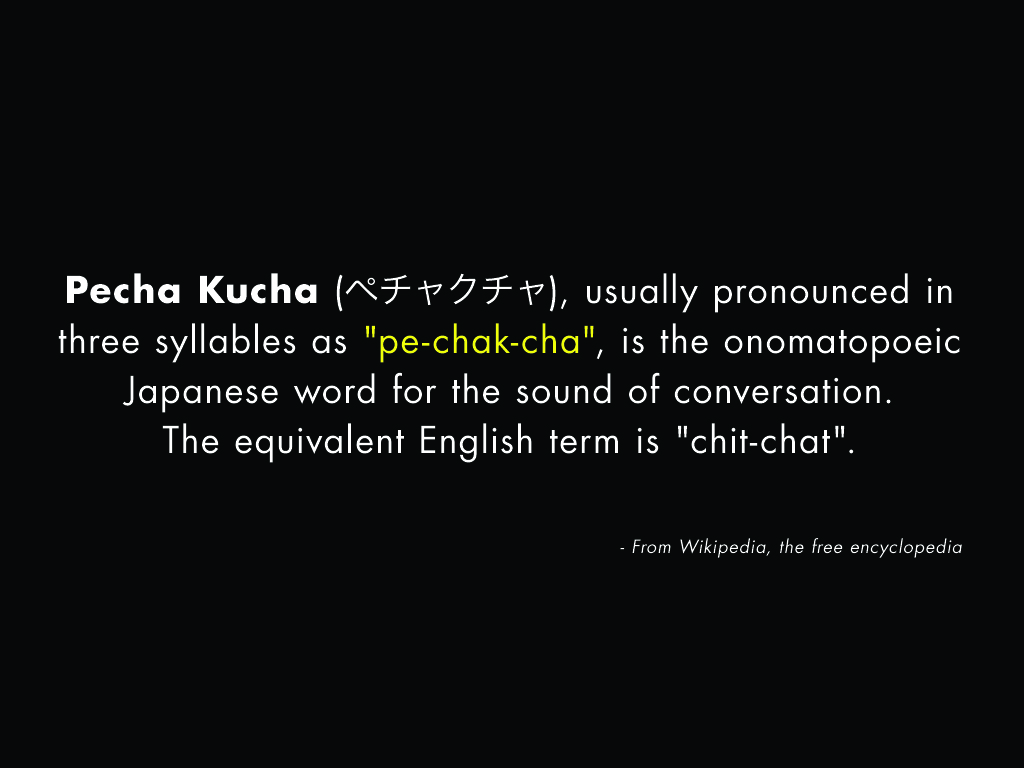Talking back to books.
Great Minds Don’t Think Alike
True confession: I’ve spent far too much of my life reading books about creativity. The word “obsession” comes to mind. Feeling blocked as a creative, I used to rabidly consume anything that promised insight and release.
Back in the late nineties, before creativity became the subject du jour, I happened across Mihaly Csikszentmihalyi’s Creativity: Flow and the Psychology of Discovery and Invention. A glance at my dog-eared, annotated copy conjures the thrill I felt at first reading about the theories behind the creative process — a process that, in practice, excited and repelled me in equal measure.
And I remained thrilled as the deluge began: books, articles, blog posts, and, eventually, TED Talks, podcasts, and YouTube videos on the creative process — more information than any one person could take in.
Though I did try.
For 20 years I soaked up everything that came my way. I took courses. I even trained with Dr. Eric Maisel, who coined the term “creativity coach” (a title I used to describe my work until I realized nobody knew what it meant).
I was in constant search for the Big Secret that would open my inner firehose of creativity, as promised by all those experts.
And then, I’m not sure when, but one day I reached the point of total saturation. Clearly, I had over-consumed. I could not absorb another list of the “4 steps in the creative process” or the “5/7/10 ways to be more creative.” I developed an allergy to sentences beginning with “studies have shown” and “according to a recent survey.” The self-proclaimed experts and their “proven” methods had worn me out.
Fie upon the rules, studies, and experts. Turns out that all my reading about creativity was what I was doing instead of creating.
Which is why I’m surprised that I even picked up — let alone enjoyed — a little book called Great Minds Don’t Think Alike: Discover the Method & Madness of 56 Creative Geniuses.
The book comprises a slender 130 pages, half of which are illustrations, with a single page summarizing the creative process of each of these well-known artists, from Leonardo da Vinci to Bjork and Edgar Allan Poe to Lena Dunham.
While the subject appears to be creativity in general, the author’s genius is her focus on concrete details. She is not rehashing the same old theories about creativity and nary a study is cited. Neither are these mini-biographies nor summaries of the artists’ entire oeuvres.
Instead, each entry highlights a single practice that weaves through that artist’s work.
Most of these artists are little known to me, save for their public personas, but the ones I do know I feel she has captured accurately.
David Hockney I’ve followed avidly for decades, and she headlines his entry with “Same thing, different way.” Perfect. “Hockney’s work has always been explorative,” she writes. “What unites it is a joyful search for newness that allows him to return to the same subject again and again … with fresh eyes.” Exactly right!
Gosling summarizes Werner Herzog’s method for becoming a filmmaker as “read everything.” (You can imagine why this is my favourite entry.) “Read, read, read, read. And then read some more,” she quotes.
For Lena Dunham it’s “fiction from reality.” Gosling tells us, “Dunham has not shied away from creating characters, dialogue, and plot points from the people around her.”
Yoko Ono’s art “centers around making the audience active participants” while Gertrude Stein harnesses time by writing in sprints of about 30 minutes each day, making that small window of time work by seeing “writing as a process of discovery, rather than entering into the creative process with an end result in mind.”
Great Minds is a neat little non-preachy book of creative inspiration by an author who assumes the reader is smart enough to take what they need rather than spoon-feeding us pat advice. I like that.
Great Minds Don’t Think Alike: Discover the Method & Madness of 56 Creative Geniuses
By Emily Gosling
Octopus Publishing Group, 2018
My Client’s Self-Published Book of Undersea Photos Is Here!

To my great delight, I opened my mailbox last week to find a copy of Life on the Edge: Portraits of Underwater Creatures from the Pacific Northwest. Having edited the text that accompanies Khya’s luminous undersea photos, I couldn’t wait to open the printed book.
Last winter, during our first conversation, Khya told me that when she started diving over ten years ago, she thought, “This is it, I’m home.” These days, she spends much of her life on or in the waters around BC’s central coast and Haida Gwaii, in what she calls “the last remnants of relative wilderness on the planet.” She lives on and dives off Gnoses, the sailboat she shares with her partner, Ralph Nelson.
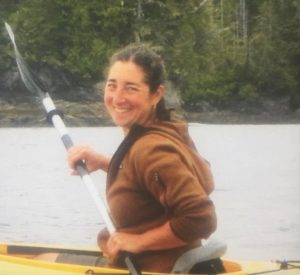
Photo by Ralph Nelson
When I first saw Khya’s images, I was not prepared for the strange beauty of the sea stars, sponges, corals, anemones, and other creatures she has patiently captured in pixels. I’d never even heard of a nudibranch (nor has spell check)!
I found just enough information in the captions to orient me and make me want to learn more. Who knew there was so much life going on beneath the ocean’s surface?
And, since we all see through the filter of our own passions, I’ll confess that my obsession with textile design makes me marvel that such tiny organisms on the dark ocean floor are dressed so extravagantly. Striking patterns and colourways in nearly every photo!
This little book has given me a more personal connection with the ocean. I take notice now when I hear related news like that of the discoveries made by a recent joint expedition with Fisheries and Oceans Canada in which remotely operated vehicles carried undersea cameras among previously unexplored seamounts near Haida Gwaii, revealing, and hopefully helping to conserve, a biological “wonderland” of sea life, some of which had never before been seen.
So, a huge congratulations to Khya on the publication of her lovely book. Thanks for opening this window into the ocean’s depths — and for bringing me along for part of the adventure!
And kudos as well to First Choice Books for their collaboration with Khya on the book’s design and printing.
You can purchase Life on the Edge directly from Khya. She hopes to be offering it on Amazon soon.
Singing a Path Through Grief
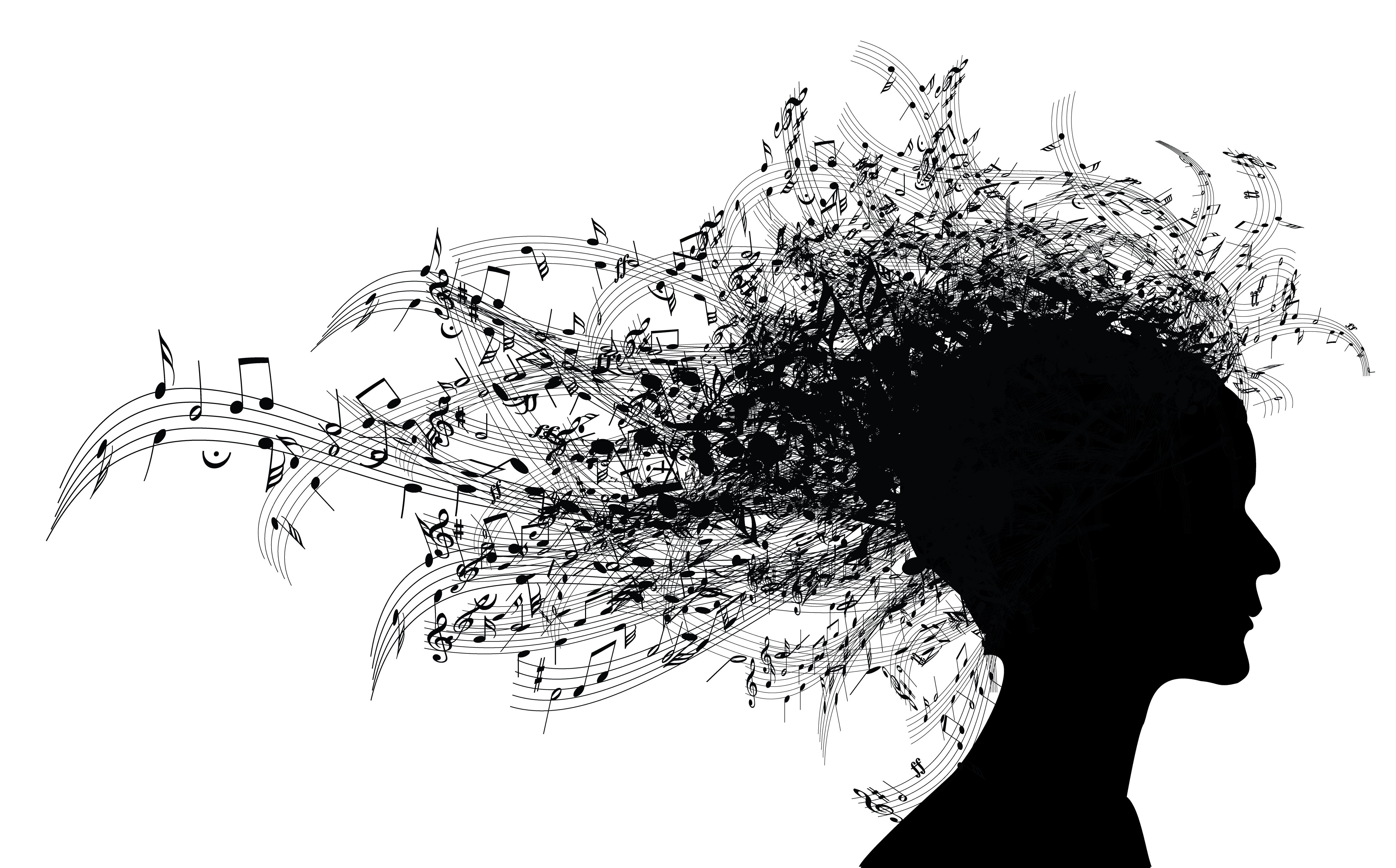
A grief storm blew into my life a few weeks back when a small bequest from my favourite uncle arrived in the mail. As I opened the envelope and pulled out an unexpected cheque, my heart was pierced with intense sorrow, guilt and regret. I hadn’t seen my uncle, or even spoken with him, in a long time. And now he was gone, the last of my mother’s family.
I wanted to share this pain with a friend or two, but I couldn’t figure out how to say “I got this cheque in the mail” in the same sentence with “and I feel unbearably sad.” I imagined them thinking, “Oh, you poor thing. A gift of money. How awful.”
But it’s true: even though I’d received news of my uncle’s death more than a year before, I did not really get that he was gone until I saw this cheque. Only then did I understand that, in spite of all the estrangement in my family of origin, he must have cared for me.
And I should have visited, should have called, should have known I mattered to him, should have told him more often how much he mattered to me.
Meanwhile, soon after I received my uncle’s bequest, in an entirely unrelated matter (or so I thought), I decided to quit my singing lessons. At the mere thought of singing, an inner wall of resistance rose up. These lessons with the wild, witty and immensely talented Jill Samycia had been a highlight of my life, so this was as puzzling to me as a story of grief that begins with “I got a cheque in the mail …” I stopped practicing, and told myself I shouldn’t be spending the money on the lessons, and anyway I can carry on without Jill, etc., etc.
But I put off giving Jill notice, so I had to show up for my next lesson. Walking there, bereft of the slightest urge to utter a sound, I rehearsed how I would tell her I was quitting when I didn’t even know why myself. “Just for a while, you understand.” That’s what I’d tell her. “I’ll be back.”
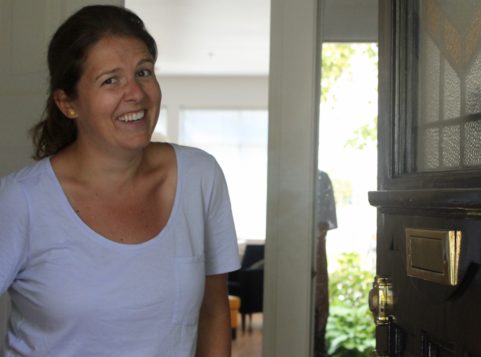
Jill Samycia greeting me at her door.
And then I got to her studio, and Jill pulled me into her arms like I’m the love of her life, and asked me how I am, and I knew she really wanted to know. So I told her about my uncle and the cheque and the overwhelming grief and guilt and regret. And I could tell she got it.
And she invited me to get up and sing.
“Just sing through it,” she said. “Let your voice be wobbly, don’t worry about it. Stop if you have to and take a breath, but then keep going.” Oh, man, I don’t know. Can I even stop crying long enough to hold a note?
Jill sat down at the piano and started in with some gentle warmups. My voice was timorous, shaky, barely there. And I didn’t get far before I burst into tears again. “Keep going!” she called, and she kept playing, so I jumped back in as soon as I could catch my breath. I sang a little longer this time before I broke down. “That’s it, keep going.”
So I did, I gasped and wobbled and wept, and she kept cheering me on, assuring me it didn’t matter how I sounded, just that I make a sound. And as I sang into that physical force of resistance, the grief I hadn’t realized I’d been holding in started to move, to fill me and flow through me, riding on my breath.
My voice grew stronger and steadier, and I could feel vital energy flow back into me for the first time since receiving the cheque. I can’t say I sang well that day, but I did sing. And the grief did move. I left Jill’s in an entirely different state than when I’d arrived, still grieving, but free of the tight anguish of that inner block, released, almost reborn.
A couple of weeks later, I asked Jill about this vocal revival. What’s the deal with singing? “The breath is what makes singing different from the other arts,” she told me.
It is the foundation to the voice. When we engage with our breath it can produce very powerful emotions.
When my students sing, I try to get them to connect to their breath (getting it deeper and more full). I believe we hold all our emotions in our core, and when we breathe from there, we experience a release that can really rattle us up! We are connecting to ourselves, which is scary to a lot of people.
It is VERY hard to “let go” and sing freely if you have never been taught or were not brought up in a creative and safe environment. Most people are terrified to be free in front of someone else, that is the hardest part of my job — pulling this out of people. The breakthroughs are magical.
Singing with Jill was not about getting rid of the grief. Quite the contrary. That’s what I’d been trying to do by NOT singing. I intuitively knew that if I sang, the grief would rise up, so I held myself in emotional lockdown.
This reminded me of all those times over the years I’d avoided writing and making; I would feel the longing to create and stop myself, and then despair of ever doing my creative work. I called it a “block” and tried all the tricks I could find, to no avail.
This experience with Jill was visceral proof of how connected emotions are to creative energy: to keep the grief pushed down, I had to stifle my creative urges. Intuitively, I knew I couldn’t sing without releasing whatever was there.
I asked Erika Moore, a body-wise Registered Massage Therapist, about the connection between creative blocks and difficult emotions. I’ve been turning to her for over 14 years for her gentle wisdom about trauma and healing. “We resist the remedy,” she explained:
This is because we often subconsciously know the emotion will come up and we don’t know if we can handle it. You’re right to call it a block, but what we’re actually doing is protecting ourselves against the discharge of energy. This is why we defend against the expression of emotion and engaging with the creative process.
And here’s where I owe such a debt to these two wise mentors of mine. Having a compassionate, emotionally intelligent singing teacher like Jill is pure gold. She walked me safely and lovingly into my grief-battered heart, trusting the potent medicine of my own voice to heal me. And learning to tolerate my own painful emotions under Erika’s wise tutelage is what has given me the capacity to “let go and sing freely,” even though this is not what I was taught in childhood.
Thank you, Jill. Thank you, Erika. And thank you to my own voice, wobbles and all.
Find your mentors. Sing your song.
And call your uncle and tell him you love him, while you still can.
Let Creative Wisdom Find You
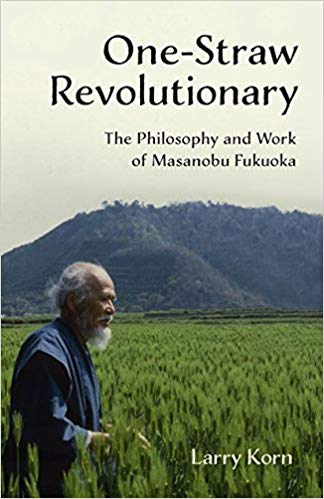
I’m always on the lookout for advice about writing. What can I say? I’m obsessed. I have a long shelf of books on writing and creativity — many of which I’ve even read. But I get a particular thrill when I stumble across writing advice in unexpected places. “Found” wisdom, if you will.
Natural writing
Here’s an example. Decades ago, I fell in love with a book on “natural farming” called The One-Straw Revolution, by renegade Japanese farmer Masanobu Fukuoka. This book turned my head inside-out about how to cultivate the land, and even how to live.
Browsing the library shelves the other day, I spotted One-Straw Revolutionary: The Philosophy and Work of Masanobu Fukuoka, written by one of the American translators and editors of the original One-Straw Revolution. I snatched it from the shelf and sat down on the floor right there at Dewey-decimal 631.58 and started reading. Within minutes, I found writing advice I didn’t know I was looking for, given by Fukuoka at a live Q&A in 1986:
Q: “How do you begin to practice natural farming?”
A: Stop thinking so much. Make your mind like the mind of a baby. They see the world directly without distinctions or judgements of any kind. When you go outside with a clear mind the trees and plants appear so beautifully. The less you think, the more beautiful things become. When you look with your eyes, you can only see the surface. When you look with your heart you can see everything.
Perfect advice for an over-thinker. Not to pull rank or anything, but I may actually be the Queen of Over-Thinking. I’m reminded of the technique of freewriting, in which you keep your hand moving during timed writings, to cut through the mind’s compulsive noise and get down to the bone of raw experience. Natalie Goldberg teaches a freewriting approach in Writing Down the Bones and all her later books, and Julia Cameron uses it in her Artist’s Way morning pages. The most compelling introduction to freewriting for me, though, is in Peter Elbow’s 1978 classic, Writing Without Teachers.
More transferable advice from Fukuoka-san:
Q: Many people trim ornamental plants and even some perennial vegetables in the fall so they will grow out more vigorously in the spring. Do you do that?
A: I would put that practice into the category of a horticultural trick. I allow plants, even the commercial citrus trees, to grow to their natural form. Trimming plants back and pruning orchard trees is really designed to make the plant bow to human will. It comes directly from the mentality that believes that nature exists solely for the use and benefit of human beings …
Here’s an example. One young Japanese fellow stayed at my farm for more than three years to learn about natural farming. Later he came to California with the idea of making the landscape green. He tried to grow rice on a dry hillside in the Coast Range where there was almost no water. He failed because he decided that he wanted to grow rice without first consulting with the spirit of the land and asking what it wanted. The first question you should ask when you come to a piece of land is, “What does the earth need?” not “What do I want to grow here.” “How can I serve nature?” instead of “What can I get from nature?”
How can I serve this writing idea that’s been gnawing at me? Does it want to be an essay, a blog post, memoir, short story, graphic novel? Fukuoka urges us to take instruction from the spirit of our material and the “terroir” of our own particular creative nature. What kind of writing is most natural to you? What sound does your true voice want to make?
When in doubt, improvise

But what if you’re “consulting with the spirit of the land” and you still have no idea what your material wants you to do with it? Don’t just sit there thinking. Pick up your pen or keyboard and write, even if you’re lost and confused. Especially if you’re lost and confused. Here’s where Sally Schneider, author of The Improvisational Cook, comes in:
Improvisational cooking is thrilling. It’s the key to ease and pleasure in cooking, freedom from recipes and set lists of ingredients, and liberation from other less tangible constraints: perfectionism, the voices of “I can’t,” fear of what will happen and maybe go wrong.
When you’re trying to figure out how to tell your story or write your blog post, when you’re doing your best to listen to your material and you’re up in your head thinking, thinking, thinking instead of writing, remember what Schneider says about the creative process:
Much of the process of improvising involves cultivating a mind-set – open, associative, resourceful – that spurs ideas and lets them flow. It’s being willing to ask: What would happen if? What would happen if I seasoned the pork roast with Moroccan spices instead of Italian-inspired garlic and sage? What would happen if I paired prosciutto with roasted apricots? Then you just go ahead and try out your idea, experiment with an open mind and without fear of the outcome, the mess you make, and the possibly imperfect results.
Schneider defines creativity as “relinquishing total control and allowing an idea to develop organically.” This means you might start out writing a blog post, and then realize it’s really a prose poem. Mess around. Do it wrong. Try stuff.
Learning to chop wood
If I had to choose only one book on the writing process, it would The Writing Life by Annie Dillard, a book about so much more than writing.
Wood chopping, for example. I first read the book when I lived on a small West Coast island just north of a similar island where Dillard had once retreated to finish a book. Like her, I lived in a house heated by a woodstove and, like her, I had not completely mastered the essential skill of chopping wood.
Dillard’s wood-chopping was so inept, she writes, that it became a source of regular entertainment for her neighbours. Until, that is, she had a dream one night that instructed her to:
“Aim at the chopping block, not at the wood.”
The instant I read this directive, which Dillard called “the only useful thing I had ever learned from any dream,” I knew it would work for me. So, there you go, wood-chopping advice in a book on writing.
Finding the wisdom that Is yours
You might have noticed that the advice I “found” has a theme: letting go, jumping in, improvising, messing about, allowing the nature of the plants/ingredients/stories to determine the structure. This is the kind of advice I tend to find because it’s the antidote to my particular poison of perfectionistic over-thinking. I need to get my hand moving, pour the words out of my head and onto the page, make a mess. The only way I can begin is to say YES to chaos and uncertainty.
The advice you find might be entirely different, but take heart, it’s out there: the exact wisdom you need in this moment about writing, photography, fashion design, colour theory – whatever your creative practice.
Keep your eyes open. Let it find you.
The One-Straw Revolution by Masanobu Fukuoka
One-Straw Revolutionary: The Philosophy and Work of Masanobu Fukuoka by Larry Korn
The Improvisational Cook by Sally Schneider
The Writing Life by Annie Dillard
Is Midlife Creativity a Biological Imperative?

Ultrasound of my grandson, Henry, 2015
Ever fall out of touch with a friend and then put off contacting them because you’ve waited too long? And the longer you wait, the harder it gets? That’s how I feel about writing this blog post.
The priest of blogging solemnly inquires, “How long has it been since your last blog post?”
I must confess: it’s been three long years.
Time to get back in the groove. I’m retooling my business, away from editing and towards creativity coaching, and I need to be walking the talk about the importance of sharing what we make.
But when I sit down to write this post (or anything else, for that matter), a few little problems arise.
My distraction problem
When I sit down to write, I am overwhelmed by one or more of the following:
- Fatigue
- Anxiety
- Fear
- A sense of impending doom
- Confusion
- Hunger
- Twitches, aches, palpitations, spasms
- A mysterious smell coming from the kitchen
- A sudden intense craving for Inspectors Morse, Lewis, Stanhope or Barnaby. And for chocolate.
My past-failure problem
When I sit down to write, I think, what’s the point? I told myself three years ago that I’d keep writing my blog, and I didn’t, so I’m bound to fail again.
(But, what kind of message is this to give my clients — or, for that matter, myself?)
My obligation problem
When I sit down to write, I remember that I haven’t attended to:
- Last year’s taxes
- Keeping in touch with distant friends and family
- Doing my qigong routine
- Putting the beans on to soak
- Learning to speak French
- Finding the source of that smell in the kitchen
I do not actually DO any of these things, you understand, but writing a blog post while they remain undone seems inappropriate somehow. Uncouth.
My idea problem
When I first sit down to write, not a single idea appears on the horizon, I picture myself alone on a vast, empty beach. Then, a distant rumble. I look up and see a towering tsunami of ideas thundering towards me.
Megatons of ideas.
I take the only sensible action. I flee.
My age problem
When I sit down to write, my 58 years heckle me:
So much time wasted! Oh, the things you could have done, the books you should have written!
Margaret Atwood has over 65 books to her name, not counting libretti, TV scripts, anthologies and collected poems. And what have YOU got to show?
What I’ve got is 10 linear feet of journals (I measured), plus all that writing in other people’s books and 18 blog posts from 3 YEARS AGO.
My grief problem
I’ve been creatively blocked for too many years. Now, when I sit down to write, a toxic grief pulls me to it like flypaper. Once I make contact, I feel like I’m stuck fast and cannot get free.
I am just getting started at this “sharing my work” thing. I am late. But am I TOO late?
For women in our reproductive years, the words “I’m late” signal pregnancy, the very acme of fertility.
But at midlife and beyond, doesn’t “late” imply the opposite?
Late bloomer (wasted all that time).
And, eventually, the very acme of “late,” when I someday become the late Marial Shea.
Sorry, am I bumming you out?
Can the biological imperative save me again?
I first experienced the gale force of the biological imperative at age 19, when I was suddenly, inexplicably, compelled to conceive a child. Looking back on the perilously troubled young woman I was, I shake my head at her decision.
Yet, I know it’s one of the few totally unambivalent decisions of my life. No doubts whatsoever. Three years later, I would have a second child. Somewhere in me, I knew these children would save me from myself (thanks, guys).
I used to think “biological imperative” meant our urge to reproduce. But now, well into midlife, I see the true depth and reach of this primal urge.
I am again feeling the imperative, as visceral as when I conceived my babies. But now I yearn to conceive and birth my own creative soul.
These words of writer Linda Kavelin Popov greeted me when I crossed over into menopause:
“As a woman moves beyond her reproductive years, she is ready for her productive years.”
And I am ready for MY productive years or, as I think of them, my creative years.
Not just ready. I feel compelled now to be a maker, as I felt compelled to conceive my children. The force is just as powerful, and when I refuse it my life becomes difficult at best, impossible and grief-laden at worst.
When I say yes, life flows. What more do I need to know?
I am ready, and I am right on time.
P.S. Are there any ways you feel like you’re running late in your creative life, anything you regret not doing? Is there one small step you can take this week towards getting started? I’d love to hear from you in the comments.
Claim Your Creative AUTHORity
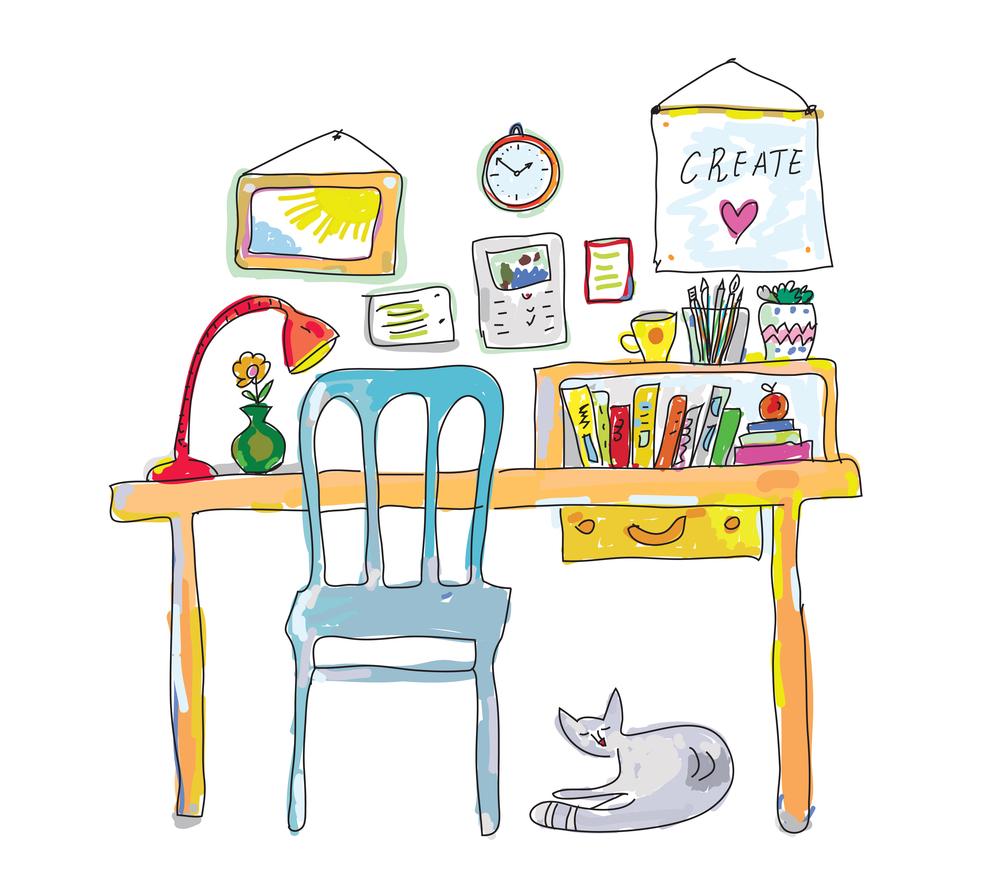
Years ago, when I lived on Salt Spring Island, I had a spectacularly creative friend known for her sparkling local presence as an actor, director and jazz singer. Her home was a magical stage set: ravishingly beautiful, inventive, ever-changing.
My home, by comparison, seemed uninspired, so I asked her for advice on how to arrange my furniture. Her answer still guides my creative decisions every day:
“Do whatever you want, dahling, but do it like you MEAN it.”
In essence, this is what I tell my author clients when their writing is riddled with phrases like “I believe,” “I think,” “it seems to me” and “in my opinion.”
These introductory phrases have two unfortunate effects:
- 1. They waste the reader’s time. We already know this is what you believe. You wrote it.
- 2. They sound tentative and undermine what I like to call your AUTHORity.
But what do you do if you take out these phrases? What do you use instead?
Nothing. That’s right. Just take out those wobbly time-wasters. You’ll notice an immediate difference in your writing. Now you’ve made a solid statement. No more dithering.
You have staked your claim, taken up intellectual space.
Which leads to my final point, cribbed from a thoughtful 1980 essay, “What’s so Wrong with ‘In My Opinion’?” by Jack P. Rawlins: when we say “I think” or “in my opinion,” our opinion can’t really be challenged because we are hiding behind our subjectivity. You can’t tell me I’m wrong if this is just what I think!
“Since we cannot inspect the source of the observation,” wrote Rawlins, “the … writer is safe. Acts of perception cannot be challenged … feelings or opinions can be disclosed, like navels, but there is nothing to do with them beyond that.”
Like navels! I love it. In other words, Professor Rawlins regarded “I think” and “I believe” as dodges to giving actual evidence that supports what you think and believe. Whereas, when we make a firm statement, we then have the responsibility for proving its integrity.
So, go ahead, move your furniture, paint your canvas, write your essay or blog post. But make sure you do it like you mean it.
Sheryl Sandberg’s Lean In Teams Up with Getty to Revive Stock Images of Women

Sheryl Sandberg’s LeanIn.org is partnering with the stock-photo giant Getty Images to provide a library of new images that better represent women.
Why does this matter?
Well, in Sandberg’s words, “You can’t be what you can’t see.”
I think the problem is bigger than that, though. Even the roles that women are already filling, with competence and acceptance, are not represented in stock photo images. So, obviously, we CAN be what we can’t see. But how does not seeing ourselves affect us … all of us, young and old, male and female?
So What?
Not everyone finds this endeavour worthwhile. If you research the announcement online, you’ll see many comments questioning the need for new stock images. For example:
“This is so dumb … if there was an incredibly pressing desire for this equitable stock-art as the media informs us there is, someone would already be producing this material and it would be a non-issue.” [Found here.]
And
“Let [’s] get on with our lives ladies and gentlemen. Men don’t compare themselves to advertisements or that ideal image that advertisers try to push down our throats. — we just say to ourselves ‘who cares it’s an advertisement.’” {Found here.]
Should we care about the images in stock photos?
I might not have thought so if I hadn’t gotten such a rude awakening last year when selecting photos for a new legal website.
I’d been hired to write new content for this website. The designer had already chosen and placed a raft of stock photos on the site under development. And the more I looked at the images, the greater my sense of disconnect with the realities of my client’s business and clientele.
When I broached the subject with my client, I realized that nobody else had noticed, including the designer.
“What’s the demographic of your clients?” I asked. “All the photos on your new site are of people in their early to mid twenties. Is that an accurate reflection of your client base?”
“No,” the client assured me, “all our clients are at least in their thirties. Most of them are in their forties or fifties.”
Once alerted to this disconnect, the client asked me to hunt down more representative photos.
But before I solved the age problem, I noticed another one.
The services page for their financial specialists pictured a male professional advising a couple across a shiny glass desk. But the two financial specialists I’d interviewed were women. Were they the exceptions? Is it a male-dominated profession? Back to the client.
“So, are most of your financial specialists men?” I asked.
“None of them are men,” my client informed me. “All women.”
I confess to you that, at this point, I had some petty thoughts about the designer’s competence. Why did they select images of young clients for an organization that serves older ones? And why did they place images of male professionals on pages that describe a female-dominated profession?
Then I started looking at stock photo sites. Go ahead, try it yourself. See how many photos you can find of non-twentysomethings. I’m here to tell you: not many.
And photos of women dispensing expert advice in a professional setting? Really, really hard to find. Believe me, I combed the Internet for hours.
Am I the only one looking for images that better represent women, of all ages, in a diversity of roles? Apparently not. Today’s NYT article reports that “the three most-searched terms in Getty’s image database are ‘women,’ ‘business’ and ‘family.’”
I did manage to find a few new images that added some age and gender diversity to the website. And by “diversity,” I really mean TRUTH. Because the financial specialists really ARE women. And the clients really ARE older.
But to this day, the photo on the financial specialist page depicts a handsome young man in a business suit pointing to a spreadsheet and explaining something to a beautiful young blonde woman wearing a t-shirt and jeans.
The folks at Getty and Lean In have selected 2,500 new images, and plan to keep adding to the library. I applaud them.
I’ll give Ms. Sandberg the last word.
“At Facebook, I think about the role marketing plays in all this, because marketing is both reflective of our stereotypes and reinforces stereotypes. Do we partner into sexism or do we partner against sexism?”
Calling All Artists: Get to Work!
In this video, writer, martial arts teacher and zen priest Keith Martin-Smith interviews his brother, celebrated fine artist Mark T. Smith. The brothers talk about the challenges facing artists today and inquire into what’s shifting as Millenials take on the art world.
“For me,” says Smith, “art is about ennobling the public.” He bemoans the fact that, in today’s upper-echelon art world, he’s not seeing much that’s ennobling.
When his writer-brother asks him what advice he’d give to artists just starting out, Martin-Smith replies, “Get out of the fucking coffee shop and go to work … Get to the studio, start working.”
Now, that’s advice that applies to all of us, whatever our medium or message.
This interview is part of Martin-Smith’s current writing project, a novel-in-progress called Only Everything: A Novel (All About You) for which he’s seeking crowdfunding. Check out his Kickstarter page.
Martin-Smith sold his house to fund his last novel, A Heart Blown Open, which was promptly rejected by his agent. He realized that he’d been subconsciously holding back, “so I could tell myself, ‘Yeah, but I didn’t really try’ when rejection inevitably came.” Discouraged, but only temporarily deterred, he got back to work.
This time I held nothing back, and if the writing wasn’t good enough now, I could at least say that I could do no more, write no better. This was me at my best, and there was no more to give. I put everything into this book — time, money, sense of self, purpose for being, and every single ounce of talent I had.
At 38 years of age, I finally became a writer because I finally understood what that meant.
The book went on to be published and to win the Silver Medal Award from Nautilus Books for 2013.
Why You Should Go to Pecha Kucha Night
 Tonight I attended Vancouver’s 28th Pecha Kucha Night. I’ve been going to Pecha Kucha for nearly two years now, and it’s become my favourite cultural event. If you haven’t yet been to a Pecha Kucha Night, do yourself a favour and go. No matter where you are in the world, there’s probably a Pecha Kucha near you.
Tonight I attended Vancouver’s 28th Pecha Kucha Night. I’ve been going to Pecha Kucha for nearly two years now, and it’s become my favourite cultural event. If you haven’t yet been to a Pecha Kucha Night, do yourself a favour and go. No matter where you are in the world, there’s probably a Pecha Kucha near you.
Think of Pecha Kucha as a local, informal, affordable version of Ted Talks. Ten presenters show 20 slides each for 20 seconds per slide. I learn things about my own city I never imagined and get inspired by the amazing, creative, transformative things people are doing.
Pecha Kucha was started in Tokyo in 2003 by a couple of architects, Astrid Klein and Mark Dytham, who wanted a way for people to share their creative work with each other. Pecha Kucha has since spread to well over 500 cities worldwide. It takes place in bars, restaurants, churches, beaches and prisons. Pecha Kucha Vancouver is one of the biggest, selling out the Vogue Theatre every couple of months or so. Tickets are a bargain at $15.
If you’re curious or can’t attend in person, you can watch online. But this can’t possibly match the electric buzz and human connection of the live events.
- Elephants grieve, flirt and make jokes
- Vancouver has one of only two jewellers in North America that uses fair trade gold
- A talk at Pecha Kucha #5 grew into a documentary film and photo-history project on Liberia
- Vancouver is considered the most Asian city in the world outside of Asia
- Lives are being changed and saved around the world by soccer camps, a simple water filtration system and a funding model that feeds photo royalties to development projects
If you get a chance, check out your local Pecha Kucha Night. Or, if there isn’t one near you, get in touch with the PK organizers and start one yourself.
To Create Is to Start Over in a Foreign Country
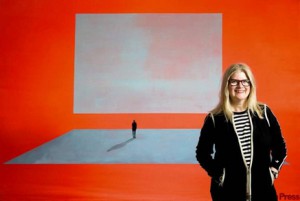 Winnipeg painter and activist Wanda Koop has been making art for nearly 40 years. She is regarded as one of Canada’s most inventive artists.
Winnipeg painter and activist Wanda Koop has been making art for nearly 40 years. She is regarded as one of Canada’s most inventive artists.
Koop’s mother, an oral historian, fled the Ukraine during the Russian Revolution. She and Wanda returned to the Ukraine together in 1997 in search of family roots, and Wanda captured their journey in her searingly beautiful documentary film, Wanda Koop: In Her Eyes. (If you’re in Canada, you might find a copy through your local library. It’s a National Film Board production.)
When I first viewed the film, well over ten years ago, I jotted this passage down. I keep coming back to it. Koop’s comparison of the art process to being a refugee stays with me:
When we come to a new place and when people are forced to start over, in many ways that is the art process … [I]n order to create a body of work, we have to be incredibly brave and we have to start from nothing, in a sense, and we have to go to a place that’s as foreign as a new country and we have to learn a whole new language.
How does this relate to all the facile advice on creativity that assures us we can make art without ever leaving the comforts of home?
Koop says it another way in this video clip:
When I’m actually painitng, I’m painting something I’m seeing in my head, not something that exists in the world. I paint it, and then I look at it.
Blog posts
Great Minds Don’t Think Alike
True confession: I’ve spent far too much of my life reading books about creativity. The word “obsession” comes to mind. Feeling blocked as a creative, I used to rabidly consume anything that promised insight and release. Back in the late nineties, before creativity...
My Client’s Self-Published Book of Undersea Photos Is Here!
Hot off the press, a new self-published book of gorgeous photographs by Khya Saban! To my great delight, I opened my mailbox last week to find a copy of Life on the Edge: Portraits of Underwater Creatures from the Pacific Northwest.
Singing a Path Through Grief
A grief storm blew into my life a few weeks back when a small bequest from my favourite uncle arrived in the mail. As I opened the envelope and pulled out an unexpected cheque, my heart was pierced with intense sorrow, guilt and regret. I hadn’t seen my uncle, or even...
Let Creative Wisdom Find You
I’m always on the lookout for advice about writing. What can I say? I’m obsessed. I have a long shelf of books on writing and creativity — many of which I’ve even read. But I get a particular thrill when I stumble across writing advice in unexpected places. “Found”...
Is Midlife Creativity a Biological Imperative?
Ever fall out of touch with a friend and then put off contacting them because you’ve waited too long? And the longer you wait, the harder it gets? That’s how I feel about writing this blog post. The priest of blogging solemnly inquires, “How long has it been since...
Claim Your Creative AUTHORity
Years ago, when I lived on Salt Spring Island, I had a spectacularly creative friend known for her sparkling local presence as an actor, director and jazz singer. Her home was a magical stage set: ravishingly beautiful, inventive, ever-changing. My home, by...
Sheryl Sandberg’s Lean In Teams Up with Getty to Revive Stock Images of Women
Sheryl Sandberg’s LeanIn.org is partnering with the stock-photo giant Getty Images to provide a library of new images that better represent women. Why does this matter? Well, in Sandberg’s words, “You can’t be what you can’t see.” I think the problem is bigger than...
Calling All Artists: Get to Work!
In this video, writer, martial arts teacher and zen priest Keith Martin-Smith interviews his brother, celebrated fine artist Mark T. Smith. The brothers talk about the challenges facing artists today and inquire into what's shifting as Millenials take on the art...
Why You Should Go to Pecha Kucha Night
Tonight I attended Vancouver’s 28th Pecha Kucha Night. I’ve been going to Pecha Kucha for nearly two years now, and it’s become my favourite cultural event. If you haven’t yet been to a Pecha Kucha Night, do yourself a favour and go. No matter where you are in the...
To Create Is to Start Over in a Foreign Country
Winnipeg painter and activist Wanda Koop has been making art for nearly 40 years. She is regarded as one of Canada's most inventive artists. Koop’s mother, an oral historian, fled the Ukraine during the Russian Revolution. She and Wanda returned to the Ukraine...
Great Writing Advice from 3 Pro Bloggers
Where do you go for great advice about writing and freelancing? Start here, with three of my favourite posts of the week, from three reliably savvy bloggers. First off is my fellow Vancouverite Daphne Gray-Grant, the "Publication Coach." She dishes out a steady stream...
Creativity Tips from Psychology Today
The June issue of Psychology Today presents research on creativity that lends weight to two of my recent blog posts, and a number of my closely held beliefs. Which, I’m sure, is their main purpose over there at Psychology Today: looking for solid evidence to shore up...
Osborne & Little’s New Wallpaper Captures Beloved Penguin Classics
The inspired British fabric and wallpaper designer Osborne & Little has brilliantly married two of my obsessions, books and interior design, in their recently released Penguin Library wallpaper. With this collage of front covers from the famous Penguin publishing...
The Saturday Papers
On Saturdays, one of my simple pleasures is going to the local library and reading the Saturday papers. My favourite is the Globe and Mail, because of the smart writing and insightful arts coverage. But my friend John, a retired career advisor, also reads the Saturday...
Poetry Deficiency? Billy Collins Can Help
American poet Billy Collins believes poetry should be out rubbing shoulders with the rabble: "When you get a poem on a billboard or on the radio or on a cereal box, it happens to you so suddenly that you don't have time to deploy your anti-poetry deflector shields...
Guest Post: Write Your Professional Bio — Today!
I'm excited to report that my first guest blog post went live today, on Kellie deRuyter's website. Kellie is a certified coach who teaches her powerful marketing system to new and seasoned coaches. She's a dynamic and dedicated coach and an all-round delightful human....
2 Online Tools to Simplify Your Reading and Writing
Some people need noise to concentrate: background music, the hiss of an espresso machine, the latest rotation on their personal listening device. Not me. I need quiet — and I don’t just mean the soundscape. I need visual quiet too. This is why web apps like the...
A Blog Post a Day Keeps Perfectionism Away
Yesterday I fell under the wheel of some deadline pressures and a friend suggested I stop this Blogathon madness. “A couple of posts a week is enough,” she said sympathetically. “You don't need to post every day.” In that moment, I realized why I’m doing the WordCount...
3 Lessons in Storytelling from Sir Patrick Stewart
Sir Patrick Stewart, aka Captain Jen-Luc Picard, was a special guest at Comicpalooza in Houston, Texas, last month. During a Q&A, audience member Heather Skye thanked him for his 2007 Amnesty talk on domestic violence. She then asked him, “besides acting,...
Stealing Creative Inspiration from Austin Kleon
I don’t know about you, but I own way too many books on writing and creativity. And what have most of them done for me other than distract me from actually writing and creating? Still, every now and then a total gem comes along. Like Austin Kleon’s Steal Like an...
Blogging My Way Out of Fear
True confession: I, Marial Shea, am afraid of my own website. There, I’ve said it. I launched MarialWrites in February and, since then, I’ve published a mere three blog posts. I thought if I built the site, I might magically become a blogger. Call it the “if you build...
Stalking the Wild Voice
"Stellaaaaaa!" Marlon Brando first played Stanley Kowalski in 1947 in a stage version of Tennessee Williams’ A Streetcare Named Desire. Then, in Kazan’s 1951 film version, Brando let rip one of the most famous hollers in screen history. Brando's scream is celebrated...
Standing Up on the Job, Part 2
New research on the dangers of sitting We sit too much. Common sense tells us this and now research confirms it. If you think you can make up for all the sitting you do with regular exercise, think again. Even if you’re getting the recommended 30 or 40 minutes of...
Standing Up on the Job, Part 1
After years of working as a freelance writer, I was starting to worry that I hated my job. I’d spot the mail carrier walking by and fantasize about applying to the post office. My whole body was screaming “get me out of here!” and I didn’t know why. Then I stumbled...
